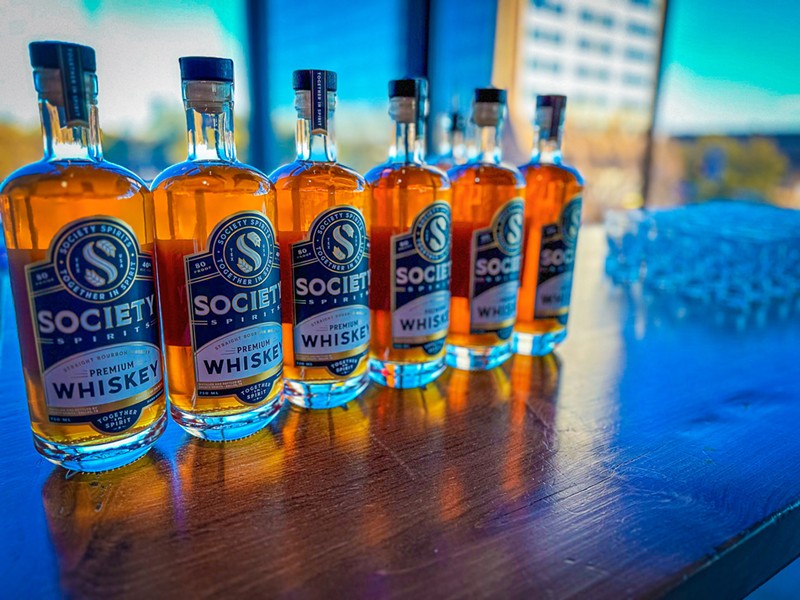Experience the Rich Taste of Galveston Whiskey: Regional Specializeds
Experience the Rich Taste of Galveston Whiskey: Regional Specializeds
Blog Article
Mastering the Craft of Purification: a Deep Study Distillery Traditions
Exploring the detailed art of distillation unveils a globe steeped in time-honored traditions that have shaped the spirits we delight in today. From the old beginnings of purification techniques to the modern-day evolution of distillery devices, each step in the process brings with it an abundant tapestry of background and knowledge. As we look into the fragile balance of modern versus traditional distilling practices and reveal the significance of crucial ingredients, a much deeper understanding emerges of the profound influence distillery practices have on the spirits we enjoy.
Beginnings of Purification Strategies
The development of purification strategies has a rich background that traces back to old people. The idea of separating parts based on their various boiling factors laid the foundation for the advanced distillation processes we have today.
The earliest proof of distillation go back to around 3000 BC in Mesopotamia, where clay pots were made use of to distill perfumes and fragrant oils. The Egyptians even more advanced these techniques, utilizing purification for medicinal objectives and embalming techniques. The Greeks, especially figures like Aristotle and Hippocrates, added to the theoretical understanding of distillation.
With time, distillation infect areas like India, China, and the Center East, each culture including its distinct touch to the craft. The evolution of distillation methods continued with the Middle Ages and the Renaissance, ultimately bring about the diverse variety of purification processes used in modern-day distilleries worldwide.
Development of Distillery Equipment

With developments in modern technology and a much deeper understanding of the purification procedure, modern distilleries now utilize a selection of innovative equipment to create spirits of the highest possible high quality. Today, distillation tools includes column stills, reflux stills, and hybrid stills, each developed to accommodate particular purification requirements. These modern stills use much better temperature law, increased purification precision, and greater performance in separating alcohol from impurities.
In enhancement to stills, distilleries now utilize innovative condensers, fermenters, and purification systems to additional fine-tune the distillate. The evolution of distillery equipment proceeds to play a vital duty in forming the varied variety of spirits readily available in the market today.
Traditional Vs. Modern Distilling Practices
Conversely, modern distilling practices take advantage of cutting-edge modern technology and advancement to enhance manufacturing processes and improve uniformity. Automated systems, digital controls, and cutting edge equipment enable contemporary distilleries to create spirits more successfully and with greater precision.
While standard distilling methods are cherished for their heritage and the one-of-a-kind flavors they generate, modern approaches offer benefits in regards to scalability, top quality control, and sustainability. By incorporating clinical developments and modern engineering, next distillers can optimize production, minimize waste, and satisfy the demands of today's market better. Ultimately, the option between contemporary and typical distilling practices usually depends on the distillery's goals, values, and target market.
Key Ingredients in Distillation Refine
Within the craft of distillation, the option of key active ingredients plays a vital function in determining the flavor profile and quality of the spirits produced. The primary ingredients made use of in the purification procedure are commonly water, yeast, and a fermentable resource such as grains, fruits, or sugarcane.
Water is a basic part as it not only weakens the alcohol web content to a tasty level but likewise affects the general mouthfeel and texture of the spirit. The high quality and mineral material of the water used can significantly impact the end product.
Yeast is another essential active ingredient that transforms the sugars existing in the fermentable source into alcohol with the process of fermentation. Various helpful hints strains of yeast can create differing flavors and scents, adding to the unique features of the spirit.

Effect of Distillery Traditions on Spirits
The influence of historical distillery practices on spirits extends beyond the selection of key active ingredients, shaping the extremely essence and personality of the last distilled items (Galveston Liquor). These customs, passed down through generations, play a critical duty in defining the unique taste profiles and qualities that identify one spirit from another
Distillery customs incorporate a variety of methods, from the particular strategies used in purification to the selection old procedures used. The usage of conventional copper pot stills in whiskey production is thought to pass on particular tastes and characteristics that are highly valued by aficionados. Likewise, the aging of spirits in oak barrels, a technique deeply rooted in distilling traditions, adds to the advancement of intricate fragrances and tastes gradually.

Conclusion
From the origins of distillation methods to the contemporary practices, the impact of distillery customs on spirits is indisputable. Distillery customs play an important duty in shaping the spirits industry and maintaining the heritage of distillation methods.
Throughout the history of purification, the devices used in distilleries has undergone considerable advancement to improve performance and top quality of the purification process.With improvements in innovation and a much deeper understanding of the distillation procedure, contemporary distilleries now use a selection of sophisticated devices to create spirits of the highest high quality. Today, purification tools consists of column stills, reflux stills, and hybrid stills, each created to cater to details distillation needs. From the origins of purification strategies to the modern techniques, the effect of distillery traditions on spirits is undeniable. Distillery customs play a vital function in forming the spirits market and protecting the heritage of purification practices.
Report this page